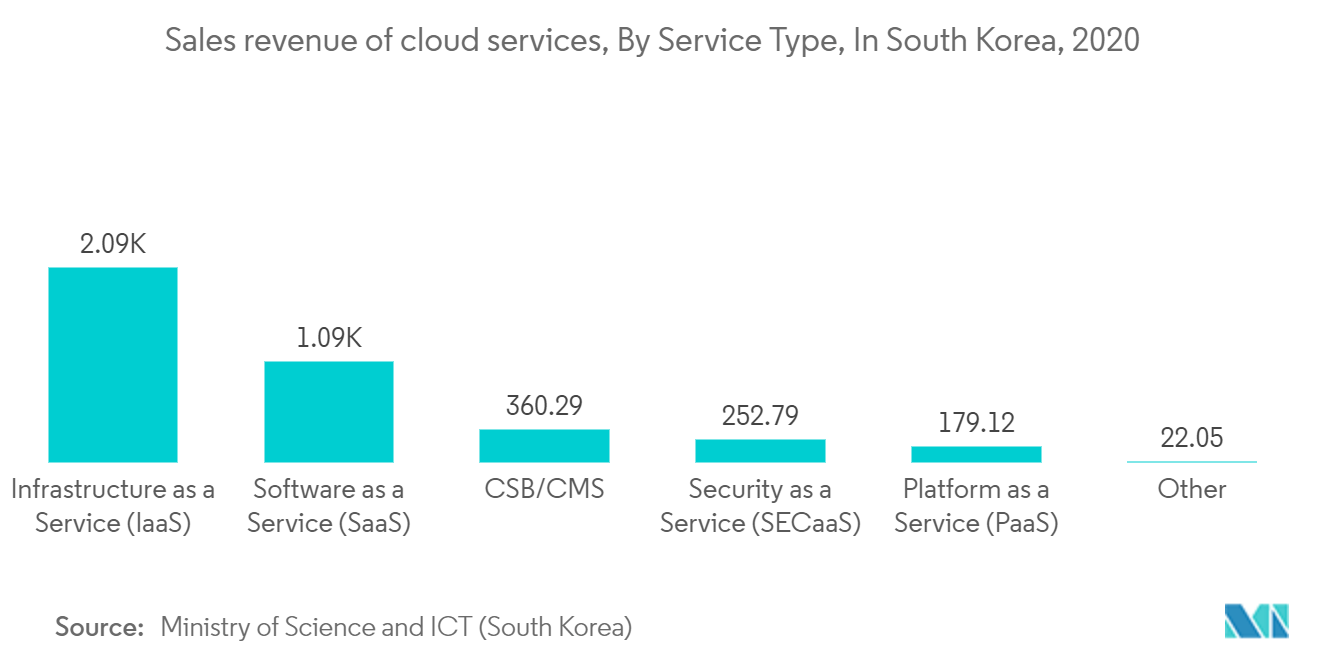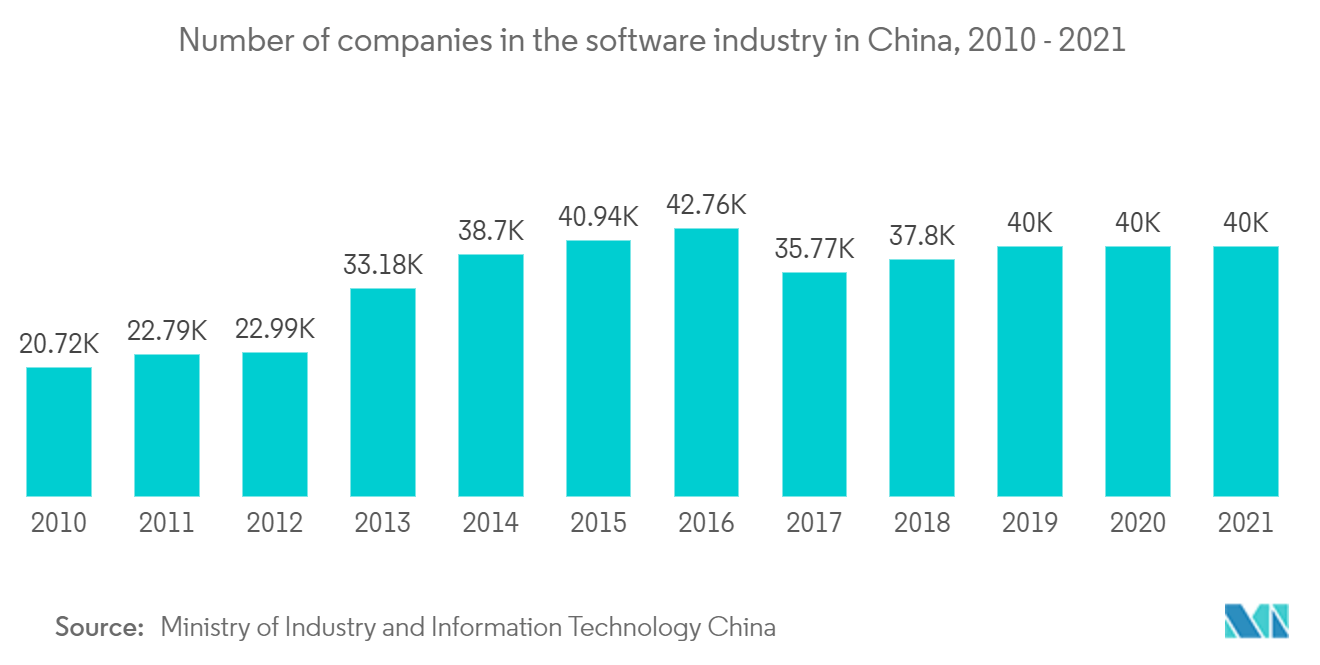Market Trends of Asia-Pacific Human Capital Management Software Industry
This section covers the major market trends shaping the APAC Human Capital Management Software Market according to our research experts:
Cloud to dominate the market
- The feature-richness, ease of use, and data capacity characteristics of the cloud-based applications drive cloud adoption across all enterprise application solutions, of which CRM and HCM were the first to be taken to the cloud. The cloud-based HCM solutions enable enterprises to make effective employee engagement tools leveraging social media integration and other APIs for learning, coaching, and recruiting tools that disrupt the market.
- Anticipating the growth in cloud adoption across enterprises, the HCM vendors also offer cloud-based solutions while continuing their on-premise offerings, but with a lesser focus on innovation than the cloud-based solutions. For instance, in South Korea, the sales revenue made with Infrastructure as a Service (IaaS) was around KRW 2.09 trillion, and the sales revenue for cloud services was around KRW 3.99 trillion in 2020, according to the Ministry of Science and ICT (South Korea).
- The cloud-based deployment strategy has several advantages, including cost-effectiveness, ease and speed of deployment, and more agile software management and operations. By offering a single consolidated platform, the cloud platform aids the needs of globally distributed business units, driving organizations to migrate from on-premises HCM to cloud-based HCM software. HCM suppliers focus on providing SaaS-based software that helps cut costs and achieve higher ROI, given the demand for cloud software.
- Most vendors anticipate transitioning from on-premises to cloud-based deployment, as on-premises deployment is more expensive and risky than SaaS-based deployment, which provides more flexibility and stability to most enterprises. Furthermore, it also limits capital expenditure and optimizes the return on assets. Thus, the transition to the cloud is an added opportunity for HCM vendors. It also reduces capital expense and maximizes asset return on investment. Hence, HCM vendors will benefit from the move to the cloud.

China is expected to witness significant growth opportunities in the forecasted period.
- Increasing adoption of software to manage the entire lifecycle of employees coupled with the growing need to comply with government regulations is a critical factor responsible for driving the demand for software in the country. Further, businesses in China increasingly operate within a digital eco-system of government and supplier parties, facing a complex and ever-changing compliance environment, driving the need for HCM software solutions.
- Companies are increasingly moving away from separate, localized payroll software or Excel and towards integrated HCM platforms that streamline multiple HR processes, often including onboarding, attendance, leave, claims, and possibly even areas like talent management and training. Such integrated HCM platforms offer a game-changing shift in how a company can manage its collective areas of HR internally and beyond the department and firm itself.
- Due to the high number of variables involved, HR administrators often struggle to maintain complete accuracy and high levels of efficiency during the payroll process. An automated payroll system can assist HR administrators by centralizing all the employees' information in a portal. Further, during the COVID-19 pandemic, the HCM portal has an inherent advantage in managing HR and payroll for employees who work remotely. Since it integrates different processes relating to HR and payroll, the remote employee can be easily managed and self-serviced by following the pre-decided protocols set in the HCM portal. Hence, there has been a greater demand for HCM software in the country during the pandemic era.
- Various companies have also been working on providing integrated solutions to the hospitality industry. For instance, Shiji Group's Human Resources Management Software (HRMS) is one of the leading hospitality HR solutions in China, which provides an integrated solution to all hotel Human Resources operations, including HR, payroll, attendance, and staff meals. The company's HR solution is used by almost all domestic hotel brands and groups in China and is considered a standard for HR software.
- In November 2021, Moka, a Chinese provider of software-as-a-service (SaaS) human resources services, announced the completion of a USD 100 million Series C financing led by Tiger Global Management, LLC. With the funding, the company plans to continue expanding into the HR sector by developing comprehensive SaaS-based HR solutions and investing in product innovation and enhancement.

